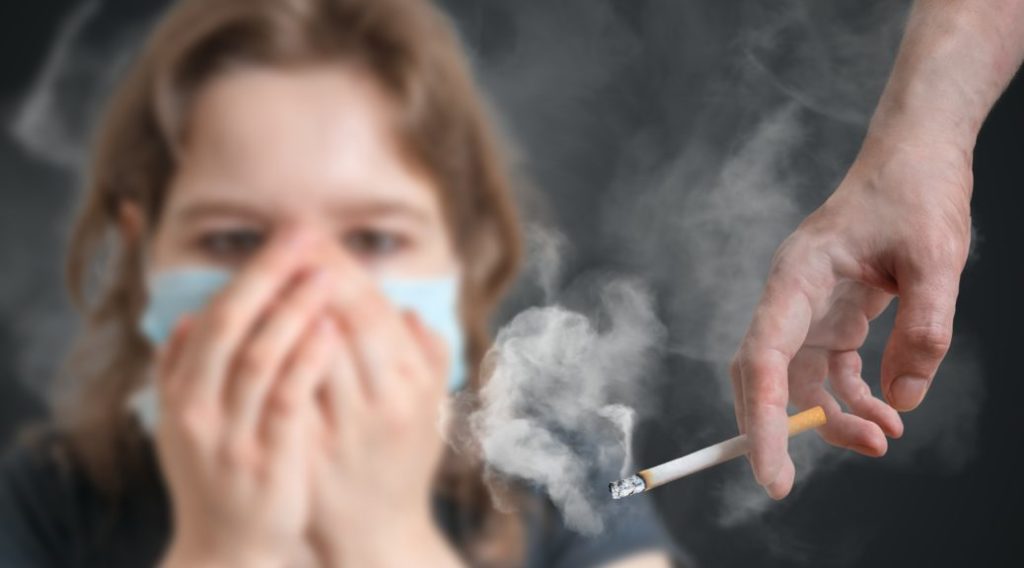
A year-and-eight-months after it struck the world, we would probably know by now that the dreaded SARS-CoV-2 virus, which causes the Covid-19 disease, is spread easily into the air through airborne particles and droplets that contain the virus.
The United States Environmental Protection Agency (EPA) says the virus is spread through exhalation of droplets and particles from a person either through sneezing, coughing, singing, or even when simply breathing. Once the droplets are released from the infected person, these can carry the virus and spread it and thus, transmit infection. More importantly, these fine droplets will spread through the air in a room when indoors and accumulate, the EPA said, to the detriment of other people living in the house or office.
Young people are also at risk of Covid-19 infection and other health issues that can make them experience difficulty in breathing, acute respiratory distress syndrome, multi-organ system dysfunction and in rare occasions, even death.
Nature Medicine issue that pointed to a 2020 study that said “children and teens under the age of 20 were roughly half as likely to become infected from Covid-19 as people over the age of 20. Clinical symptoms might occur an average of 21 percent of the time among people aged 10 to 19, compared to 69 percent in people over 70 years old,” it said.
Though generally infections happen more in adults than children, we shouldn’t be taking this lightly, especially when indoors where everyone’s health is at its most vulnerable. Kids can be more susceptible since many are still learning-at-home. Just take action by keeping your child’s health in check, more importantly in this time of Covid.
How? First is to avoid having small gatherings at home. The United States Centers for Disease Control and Prevention (CDC) said that small household gatherings have been the cause of the recent surges. An estimated 40 percent of cases are asymptomatic, the CDC said, and that even the asymptomatic individuals can still transmit the virus. No matter how small that family gathering may be, you’d never know if a person you invited to your home may be a carrier of the SARS-CoV-2 virus.
Next, wear face masks. Wearing these may be uncomfortable for children, and sometimes frightening so a simple reassurance can help, like saying doctors and scientists are finding out ways to keep the virus out at homes and are doing their best to make everyone safe from Covid so wearing a mask is their own contribution to make everyone safe as well.
Best also to make sure that indoor air at home is clean by increasing ventilation or air flow. A properly ventilated home, those with lots of outside air, are commonly safer. It is said that slower air is not good in limiting the spread of an airborne virus such as SARS-CoV-2. The faster the air moves, the better, especially in this pandemic so the virus won’t airborne for too long. Ventilate by opening windows and doors more frequently, but watch out as well since doing so may also let in other pollutants like dust and pollen, which are also bad for the kids’ respiratory health.
While applicable, make sure the air flow in the home is somewhat “unidirectional,” meaning fresh air is sucked in from one side the house, let it circulate in the room, and then use exhaust fans to pull away the air inside, then “pushed” outside into an open area so the supposed bad air is not re-introduced or lingers in the home.
Then, see what causes indoor air problems, what drives air pollutants to increase in quantity. Temperature and humidity are the common culprits why some air pollutants are present in the home.
Determine also possible sources, such as combustible materials found at home like paint, oil, gas, kerosene, cleaning products, carpets, even unclean ventilation systems, tobacco, cigarettes—and the list goes on.
If you can, learn how to monitor and evaluate air quality in the home. You may wonder how that is possible since air is invisible. It is not exactly seeing the air but monitoring the kind of air that passes and circulates inside the home.
Impossible? Of course not, especially when using a smart air quality monitor such as uHoo. It can properly and correctly identify—and monitor—up to about nine (9) indoor air pollutants, the likes of carbon dioxide (CO₂), carbon monoxide (CO), ozone (O₃), nitrogen dioxide (NO₂), total volatile organic compounds (TVOCs) and particulate matter with a diameter of less than 2.5 μm (PM₂.₅)
Determining the level of indoor air pollutants is done by uHoo using its world’s best uHoo Virus Index, a 1-10 scoring system. Knowing who your enemy is up there in the air allows you to take the necessary steps to clean the air of these poison in the air, and make your family breathe safely, comfortably, and worry-free.
The idea of a Covid-19 disease still lingers in our air, undoubtedly, and creates fear among us, especially the children. The quarantines have taken its toll on their mental health because they can’t go out and play at school or at the park.
Aside from physical health in the time of Covid-19, it would be nice to look into their mental health as well. A simple reassurance that doctors and other experts around the world are trying to discover what steps to take to keep everyone safe. And perhaps remind them as well to do their share by washing their hands and maintain physical distancing.
Keeping kids healthy and safe in this time of Covid should be a top priority. Knowing the kind of air they—and the entire family—breathes in this pandemic, and knowing that what they breathe is safe is already a comforting thought for us and for our kids, using the uHoo smart and low-cost indoor air quality monitor.
It’s like the battle is already half-won.



